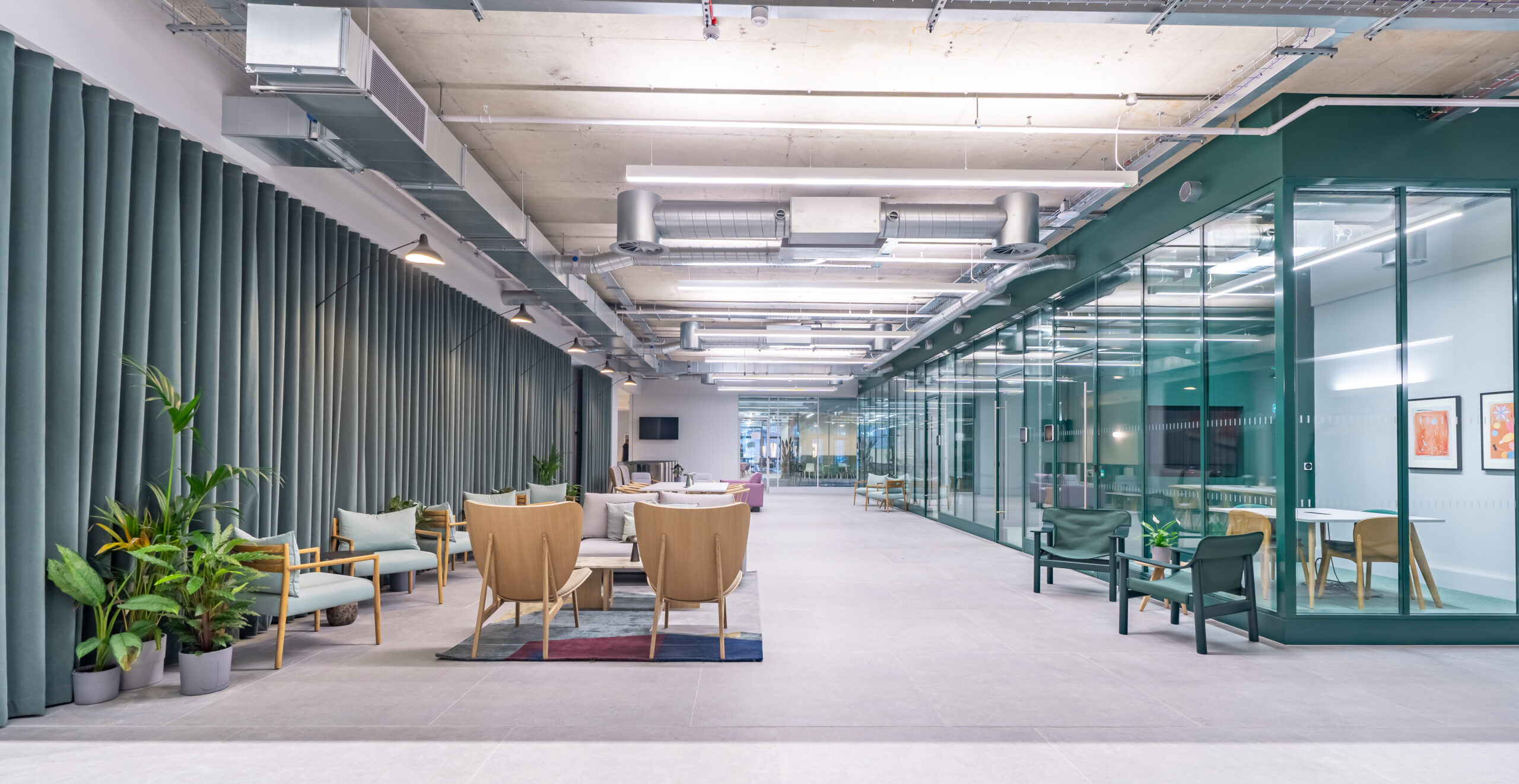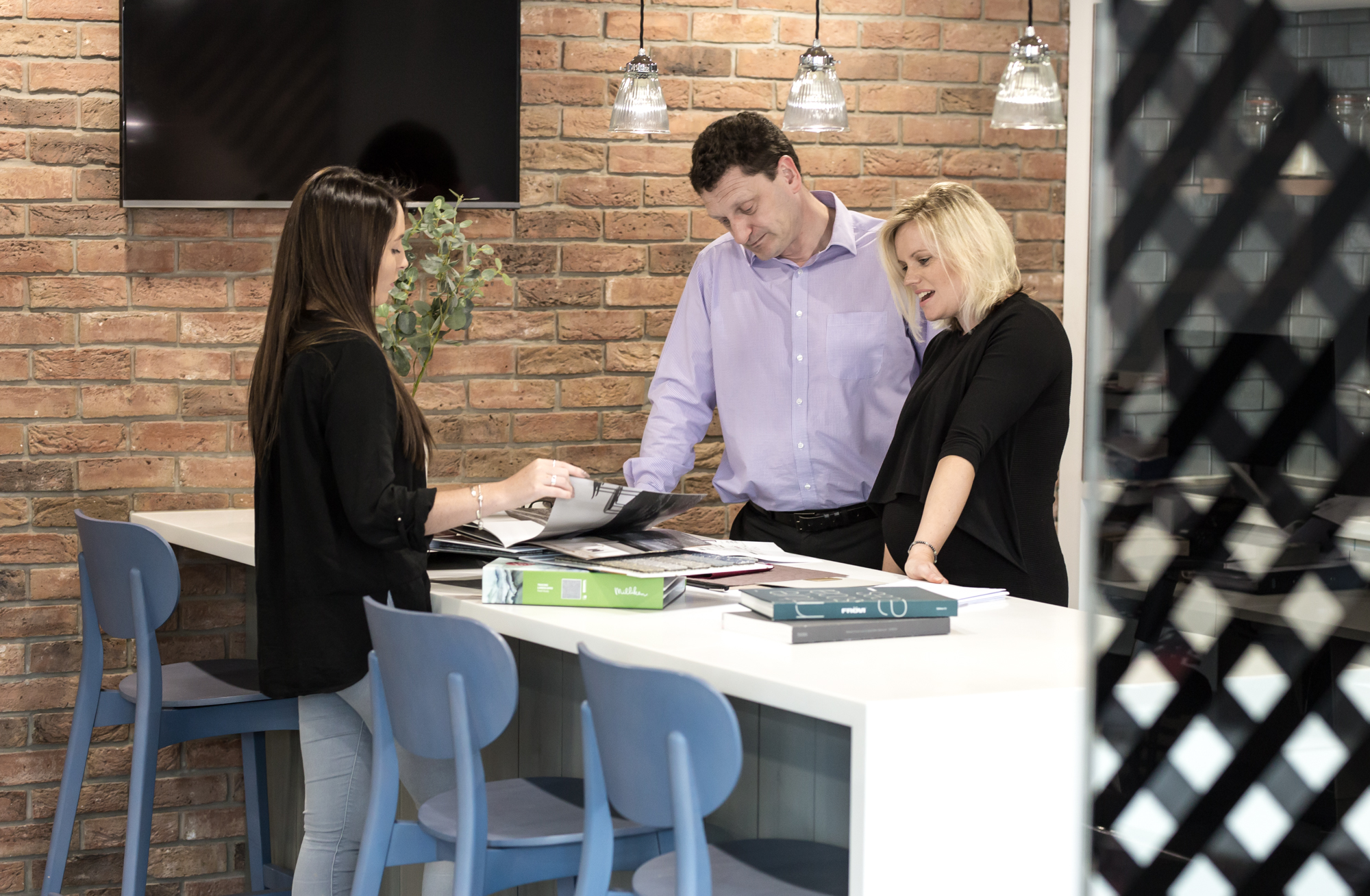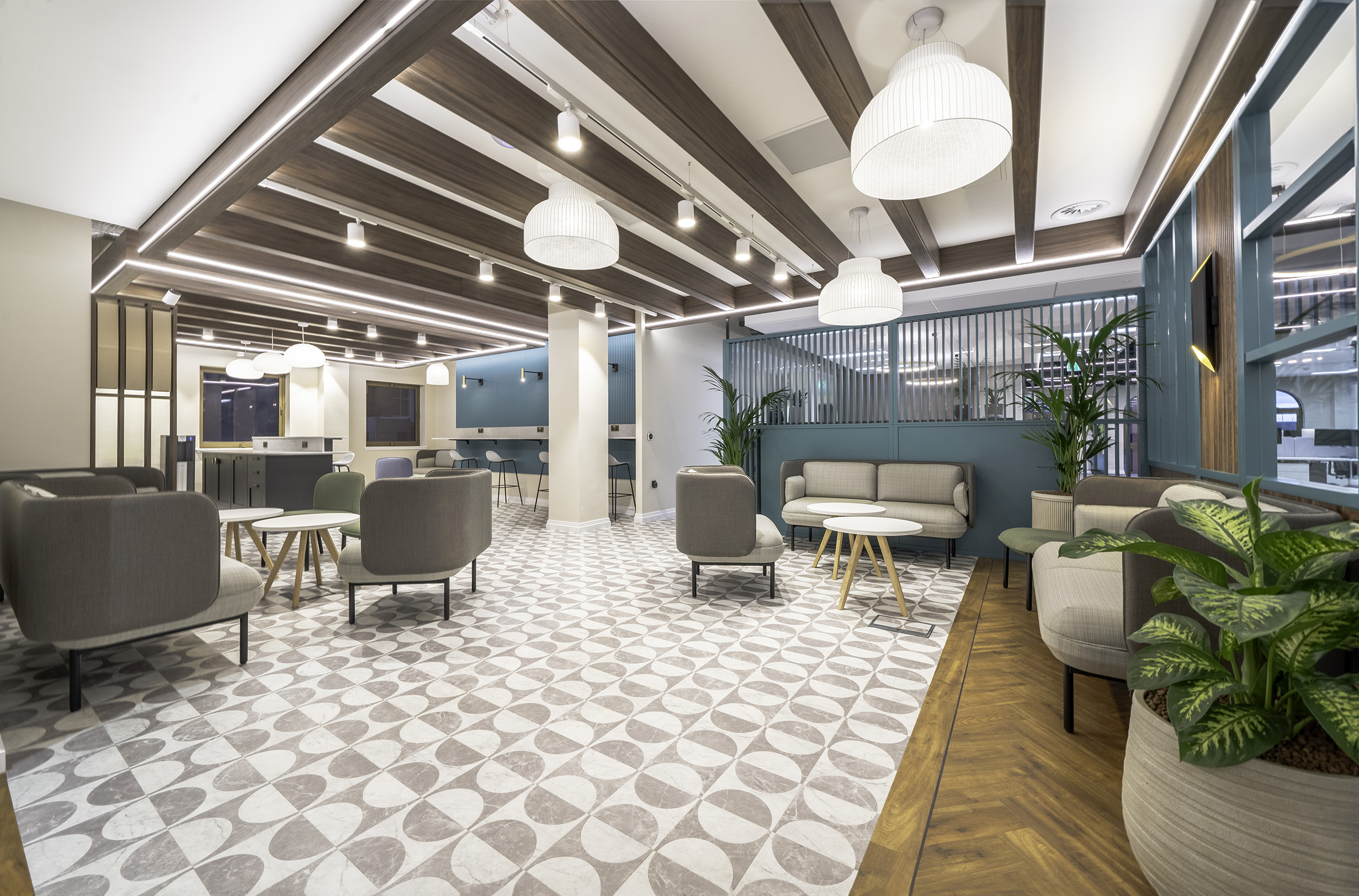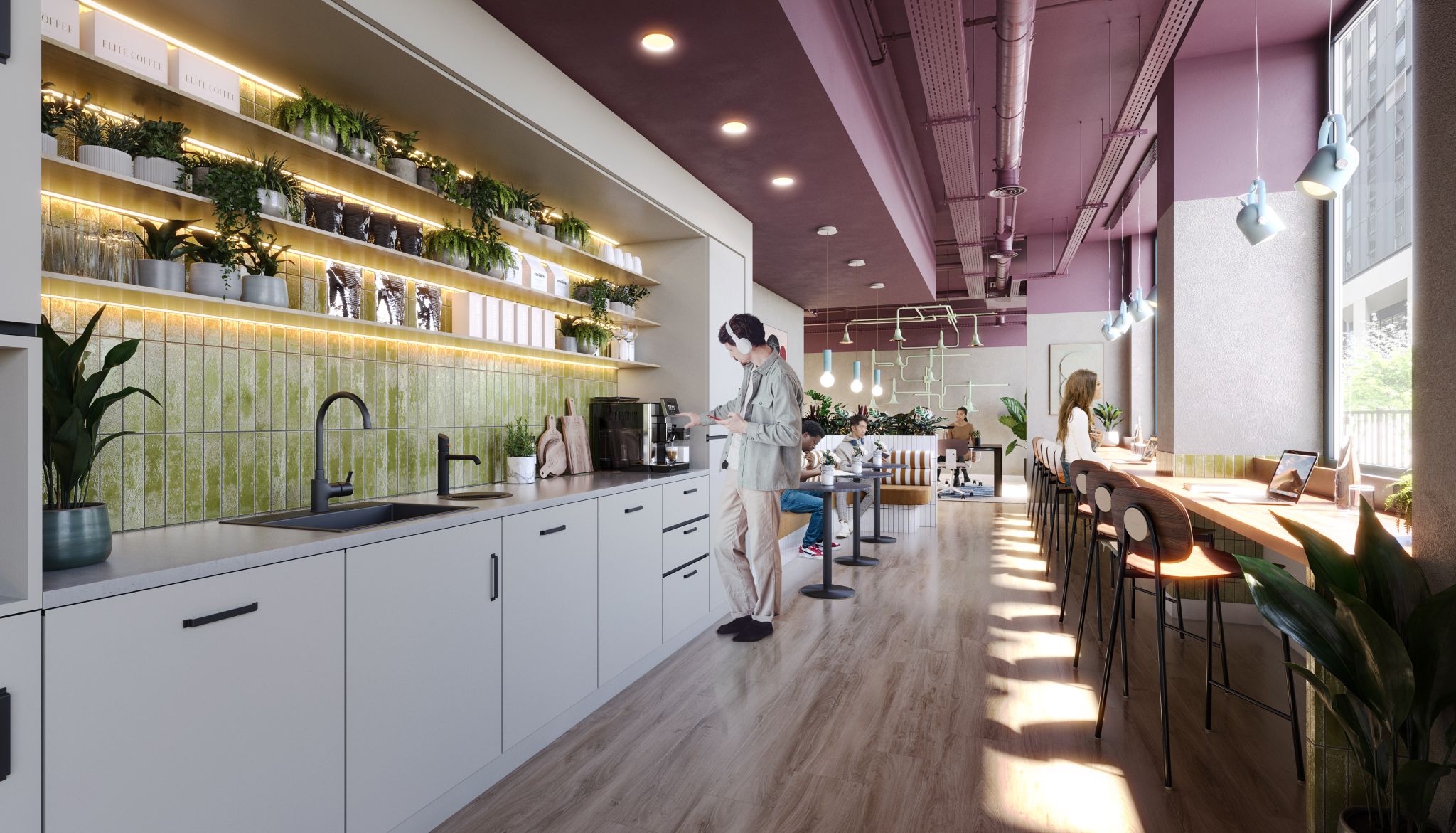As technology continues to evolve, artificial intelligence (AI) is rapidly reshaping the way we design, manage, and experience office spaces. Businesses are leveraging AI-powered solutions to enhance efficiency, improve employee wellbeing, and create work environments that adapt to the changing needs of the modern workforce. From smart lighting and automated climate control to AI-driven room booking systems, these advancements are revolutionising office fit-outs and setting a new standard for workplace innovation.
This article explores the key AI-powered solutions transforming office design in 2025 and examines their impact on workspace efficiency and employee productivity.
Smart Lighting: Enhancing Efficiency and Wellbeing
One of the most effective AI-driven innovations in office design is smart lighting. Traditional office lighting systems can be wasteful and often fail to meet the varying needs of employees throughout the day. AI-powered lighting systems address these issues by dynamically adjusting brightness and colour temperature based on occupancy, time of day, and even individual preferences.
How Smart Lighting Works
- AI-integrated lighting systems use motion sensors to detect occupancy and automatically adjust lighting levels, reducing energy waste in unoccupied areas.
- Machine learning algorithms analyse employee behaviour and natural light levels to optimise brightness and colour temperature, enhancing comfort and productivity.
- Some advanced systems integrate with wearable technology or smartphone apps, allowing employees to personalise their lighting preferences for maximum comfort.
The Benefits of Smart Lighting
- Energy Efficiency: AI-controlled lighting reduces unnecessary energy consumption, helping businesses cut costs and lower their carbon footprint.
- Improved Wellbeing: Circadian lighting, which mimics natural daylight patterns, can improve sleep quality, mood, and overall wellbeing.
- Boosted Productivity: Studies show that well-adjusted lighting improves focus and reduces eye strain, leading to better work performance.

Automated Climate Control: Creating Optimal Work Environments
Maintaining a comfortable office temperature is essential for employee satisfaction and productivity. AI-driven climate control systems are transforming how workplaces manage heating, ventilation, and air conditioning (HVAC) by making intelligent, data-driven adjustments in real-time.
How AI-Powered Climate Control Works
- Smart thermostats and HVAC systems use AI to learn from occupancy patterns, weather forecasts, and employee preferences.
- Sensors collect data on temperature, humidity, and air quality, allowing the system to make automated adjustments.
- AI can integrate with other smart office technologies, such as window shading and air purification, to create the most comfortable environment possible.
The Benefits of Automated Climate Control
- Energy Savings: AI optimises heating and cooling based on real-time data, preventing unnecessary energy use and reducing utility costs.
- Improved Air Quality: Some systems monitor CO2 levels and automatically adjust ventilation, enhancing indoor air quality and reducing fatigue.
- Increased Comfort and Productivity: Employees work best in environments tailored to their comfort levels, reducing distractions and boosting performance.
In the UK, the University of Oxford’s School of Geography and the Environment undertook a project to enhance energy efficiency through automated climate control in the historic Dyson Perrins Building. This initiative aimed to address the challenges of managing heating in a structure not originally designed for modern energy demands.
The project commenced with the development of USB-based data loggers capable of recording temperature and occupancy at the room level. These compact devices, powered by light energy harvesting, were deployed throughout the building to gather detailed environmental data. Despite challenges posed by building access restrictions during the COVID-19 lockdown, the sensors successfully collected data over an extended period. The collected data was transmitted to a Firebase database developed by EcoSync, where it was visualized and analyzed. This analysis provided insights into occupancy patterns and temperature fluctuations, forming the basis for optimizing heating schedules and reducing energy consumption.
The successful deployment of these sensors showcased a cost-effective method for collecting environmental data in office settings. The insights gained from this project are expected to inform future installations of IoT-based climate control systems, contributing to more energy-efficient building management practices.
AI-Powered Room Booking: Streamlining Office Operations
As businesses embrace hybrid working, AI-powered room booking systems are becoming essential for managing shared office spaces efficiently. These systems use artificial intelligence to predict space utilisation, automate scheduling, and eliminate double bookings.
How AI-Driven Room Booking Works
- Employees book meeting rooms via an AI-powered app that recommends the best available space based on past preferences and meeting requirements.
- Sensors detect actual room usage, releasing reservations for no-shows and freeing up space for others.
- AI analyses booking trends to provide insights into space utilisation, helping businesses optimise their office layout.
The Benefits of AI Room Booking
- Increased Efficiency: Employees spend less time searching for available meeting rooms, improving workflow and collaboration.
- Optimised Space Utilisation: AI ensures that office space is used efficiently, reducing the need for excessive meeting rooms.
- Data-Driven Decision Making: Workplace managers gain valuable insights into space usage trends, helping them make informed decisions about office layouts and fit-outs.

AI’s Broader Impact on Workspace Efficiency and Productivity
Beyond these specific solutions, AI is playing a broader role in reshaping office fit-outs and workspace design. Here’s how:
1. Predictive Maintenance and Facility Management
- AI-powered facility management tools detect potential issues in office equipment (such as HVAC systems or printers) before they become critical, reducing downtime and maintenance costs.
- Smart sensors track foot traffic and wear-and-tear in office spaces, alerting maintenance teams to areas that need attention.
2. AI-Powered Workplace Analytics
- AI analyses occupancy data to optimise office layouts, ensuring that workstations, collaboration areas, and breakout spaces are positioned effectively.
- Data insights help businesses adjust their office fit-out strategies to accommodate employee behaviour and evolving work patterns.
3. Virtual Assistants and AI Chatbots
- AI-driven virtual assistants help employees with routine tasks such as scheduling meetings, finding information, or even adjusting their workspace settings.
- Chatbots provide instant IT and HR support, reducing the need for human intervention and improving response times.
The Future of AI in Office Design
The integration of AI into office design is still evolving, but its potential to create smarter, more efficient workspaces is undeniable. As AI continues to advance, we can expect even more sophisticated applications, such as:
- AI-driven ergonomic adjustments for desks and chairs based on employee posture and usage patterns.
- Augmented reality (AR) office planning tools that use AI to suggest optimal layouts.
- AI-powered collaboration tools that enhance virtual meetings with real-time transcription, language translation, and automated task delegation.
AI-powered office fit-outs are no longer a futuristic concept—they are a reality transforming workspaces in 2025. From smart lighting and automated climate control to AI-driven room booking systems, these innovations are improving energy efficiency, optimising space utilisation, and enhancing employee wellbeing and productivity. Businesses that invest in AI-driven office design will not only benefit from cost savings but also create work environments that are adaptive, intelligent, and ready for the future.
As AI technology continues to evolve, Estilo Interiors is at the forefront of integrating these smart solutions into modern office fit-outs. Get in touch with us here to discover how we can help design a future-proof, AI-enhanced workspace tailored to your business needs.



